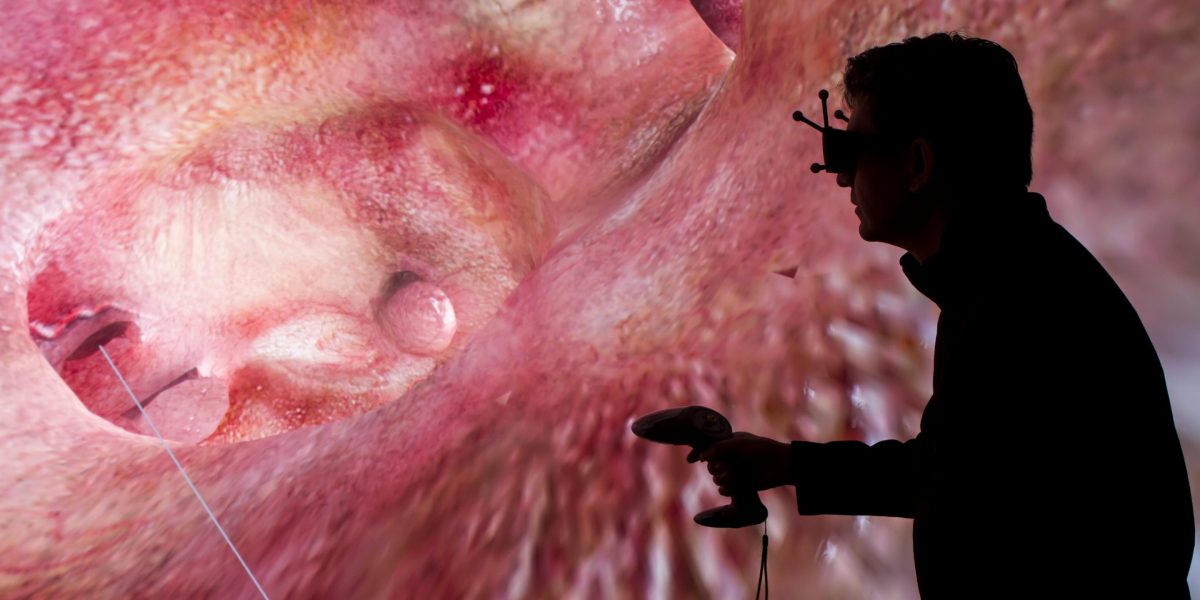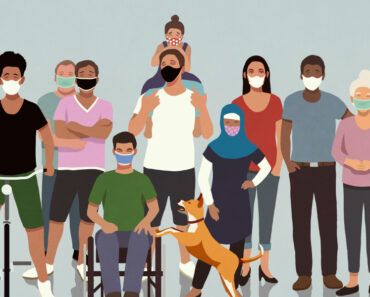This post was originally published on this site
https://fortune.com/img-assets/wp-content/uploads/2024/04/3DXCITE_Living_Heart_Powerwall_1-e1712845734185.jpg?w=2048
My daughter was two when she got her first pacemaker. She needed it because of a congenital condition that had reversed the lower chambers of her heart. That resulted in electrical problems—making her heart less efficient at circulating blood and significantly shortening her expected lifespan.
There was little guidance for the doctors managing her condition as it was so rare that there was no way to predict how she would react to treatments. Hearts are complex organs with many moving parts, and each person’s is unique. There are countless ways for unsuspecting problems to arise, especially in children. That means there’s often not enough information available to make data-driven decisions about unusual disorders.
As an engineer, I knew there had to be a solution. I’d seen how advanced three-dimensional models—known as “virtual twins”—help airplane and automotive manufacturers test new, complex machines in digital simulations. I thought, the heart is designed like a machine. It pumps blood in a regular pattern. It runs on electricity. Maybe I could help.
That realization led me to start the Living Heart Project more than a decade ago. While it’s possible to capture the specifics of a person’s heart with medical imaging tools like CT and MRI scans, that imaging is still incomplete.
So we gathered a team of experts to get a better picture. Together, our coalition of engineers and physicians developed a way to create simulations of living people’s hearts—first creating a generic “average” heart, and more recently modeling the hearts of specific individuals, accurate down to the smallest, most singular details.
My daughter’s condition was one in a million, but her predicament was not. Heart disease is consistently the leading U.S. cause of death and accounts for larger medical costs than any other condition. By 2035, the American Heart Association projects that 45% of Americans will have some form of heart disease.
Despite being so commonplace, heart disease is difficult to diagnose because the symptoms are similar to those of other diseases like respiratory ailments. Patients with heart failure are misdiagnosed at a rate of 16% in hospitals and nearly 70% when general practitioners refer patients to specialists, according to a study in the Journal of Cardiac Failure.
Seeing inside the heart
But with a virtual twin involved, the diagnostic picture changes. The twin can be displayed on a screen or in virtual reality as a three-dimensional model that can be enlarged, rotated, and examined by a team of experts. Doctors can “see” inside a patient’s heart, pumping under different conditions to locate problems. They can hear the heart beating and watch the blood and oxygen flow—all without cutting into the patient.
Because virtual twins include the necessary features of each patient’s heart, they allow doctors to design complex reconstructions and even test drugs and devices such as coronary stents safely on the twin. In short, they help determine the best course of treatment by using simulations.
In one case, Dr. David Hoganson at Boston Children’s Hospital encountered a toddler with a perplexing condition: Oxygen in the blood was flowing from the heart to only one of their lungs. Using a virtual twin of the heart, Hoganson and his team identified the problem, designed and tested a surgical procedure, and used it to save the child’s life. They’ve since done hundreds more surgeries using virtual twins.
Virtual twins are also valuable teaching tools, helping students learn about the heart and other organs. They let patients and their families see what’s happening up close, promoting understanding and hope during an otherwise frightening experience. And thanks to artificial intelligence and cloud services, insights from one doctor can inform the work of others across the world.
Today, the possibilities continue to grow. We’re beginning to understand how to simulate other organs, such as lungs and brains. One day, we’ll be able to create virtual twins of our entire bodies, transforming the way that we manage our health. We’re already working with the FDA to build virtual human subjects for early clinical trials, helping deliver treatments to people who need them faster than ever.
From verifying the best location for medical devices to understanding how a new drug will interact with living tissue, a virtual twin enables researchers to conduct testing in days that used to require years of patient trials.
When I started this work, people wondered if I would trust my daughter’s life to this new technology. When she was first diagnosed, doctors had little confidence in their options to keep her heart working. They thought her heart would last just 30 years. She’s now 34, and not slowing down. She’s a pediatric neuroscientist at a top program in the country, where she works to discover treatments for children with brain disorders. Her future is still uncertain, but with a personalized health care plan and her virtual twin, she has the best chance ever.
Virtual twin technology has already improved the lives of countless patients. In the years to come, it will change the world.
Steve Levine, Ph.D., is senior director of virtual human modeling at Dassault Systèmes and founder and executive director of the Living Heart Project.
More must-read commentary published by Fortune:
- Snowflake CEO: Hallucinations are the bane of AI-driven insights. Here’s what search can teach us about trustworthy responses
- We analyzed 46 years of consumer sentiment data–and found that today’s ‘vibecession’ is just men starting to feel as bad about the economy as women historically have
- 90% of homebuyers have historically opted to work with a real estate agent or broker. Here’s why that’s unlikely to change, according to the National Association of Realtors
- Intel CEO: ‘Our goal is to have at least 50% of the world’s advanced semiconductors produced in the U.S. and Europe by the end of the decade’
The opinions expressed in Fortune.com commentary pieces are solely the views of their authors and do not necessarily reflect the opinions and beliefs of Fortune.



